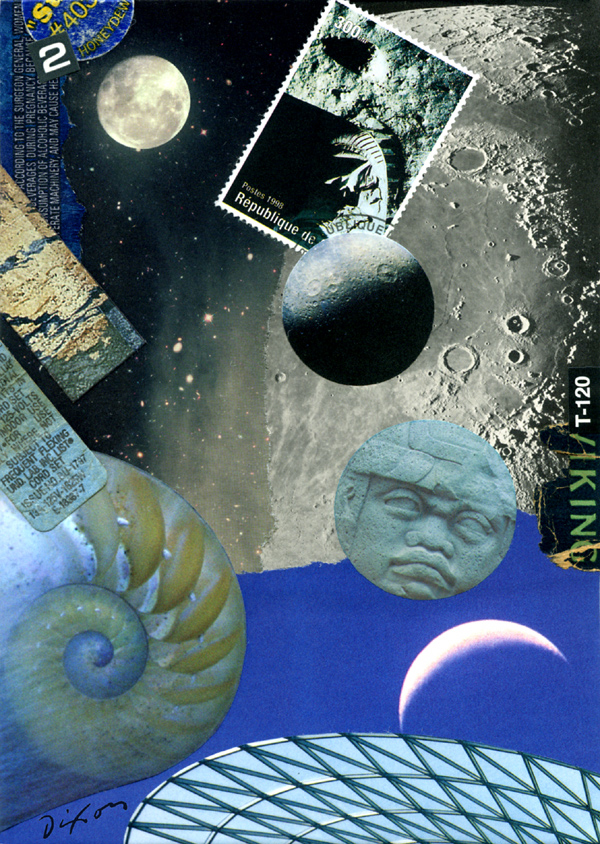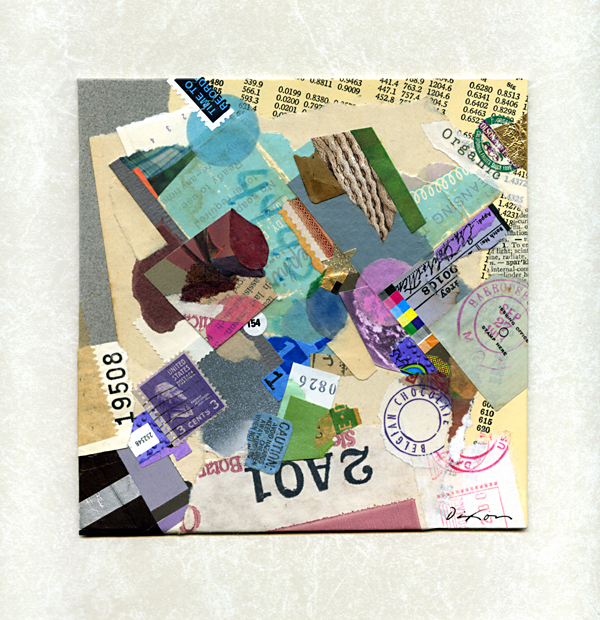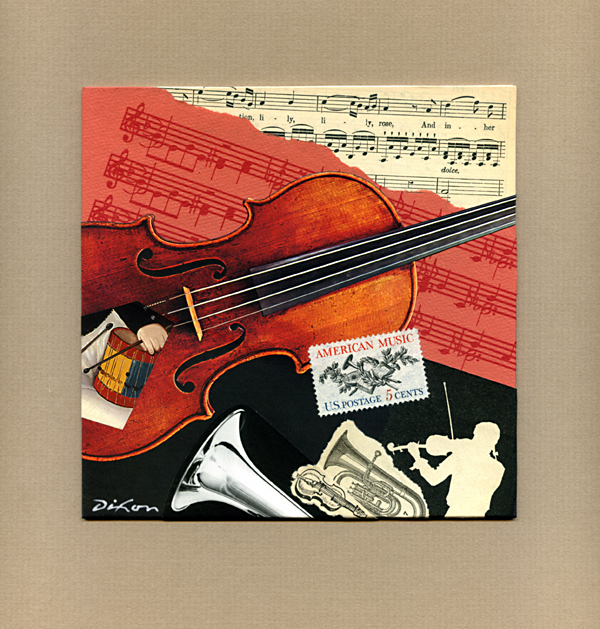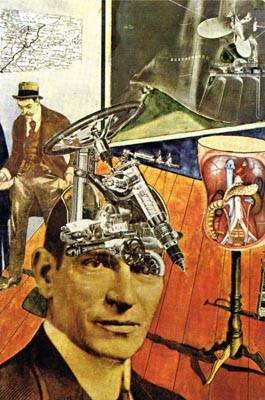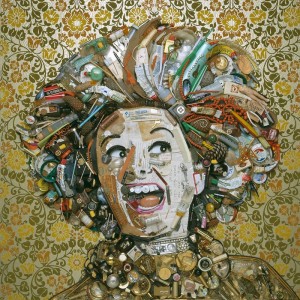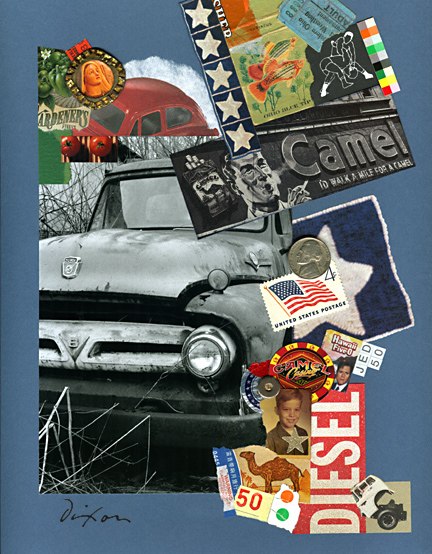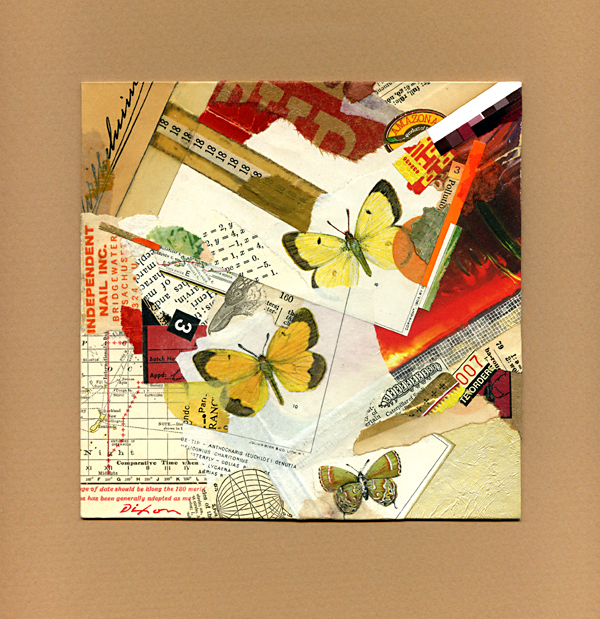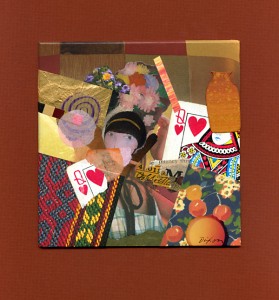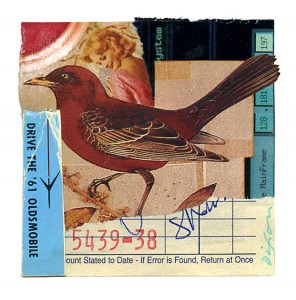“Structures can be understood and qualities felt in a single, balanced perception of order. Art attempts to discern order relations in nature. Data are set out in terms of recreated sensed forms; and the felt order is expressed in sensible structures exhibiting properties of harmony, rhythm, and proportion.”
—Gyorgy Kepes
What is it about seeing two full moons balanced on the first and last day of the month that compels me to create a collage with subjective connotations? The wonder of the celestial (and the potential for visual juxtapositions of the macro- and micro-cosmic) has long held me in its spell.
It is advantageous for a collage artist to have a well-organized “morgue” of categorized scrap readily available, in order to quickly assemble ingredient elements when a creative concept takes hold. It frees one to follow the germ of an idea with associative intuition. To tell the truth, I would not know any other way to successfully approach this type of collage. Having to hunt for an image is a spontaneity killer. One’s collection of pieces and parts should be based on one’s unique way of making connections. As with most artists, I began to save images in my youth, according to a personal and natural sense of classification. Over the years, the collection has been subjected to periodic refinement and culling, although I cannot bring myself to cut off the acquisitions for good, even though I know I shall never compose all the artworks that lay fallow in those file cabinets. There are, of course, other ways to catalyze and create a collage, and I shall talk about them at a future instance.
R.I.P. ~ Mission Commander Armstrong . . .
Moon Blues
collage miniature by J A Dixon
5 x 7 inches
• S O L D
